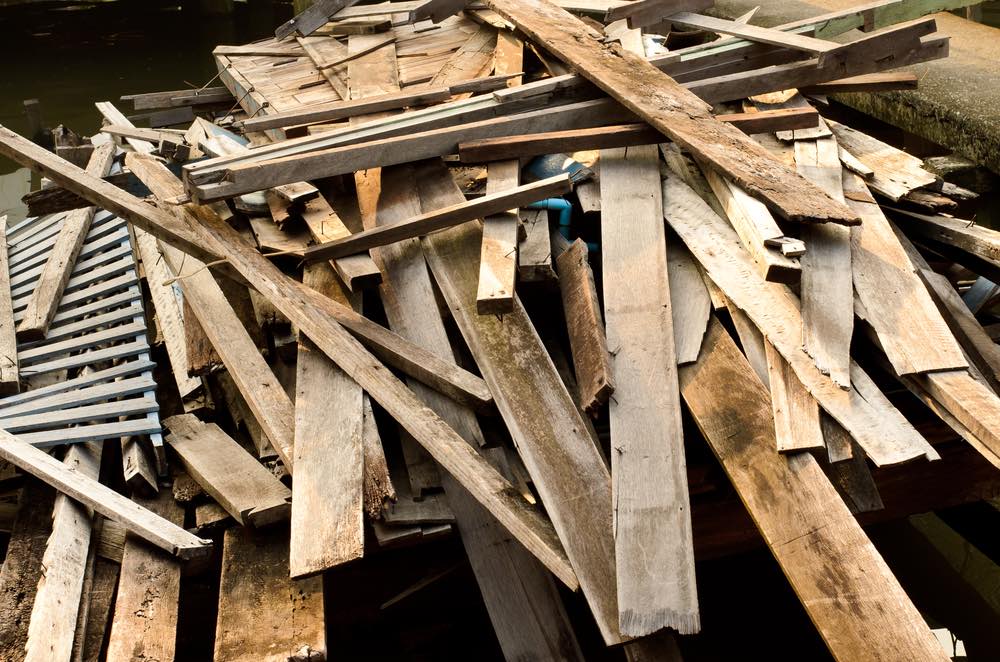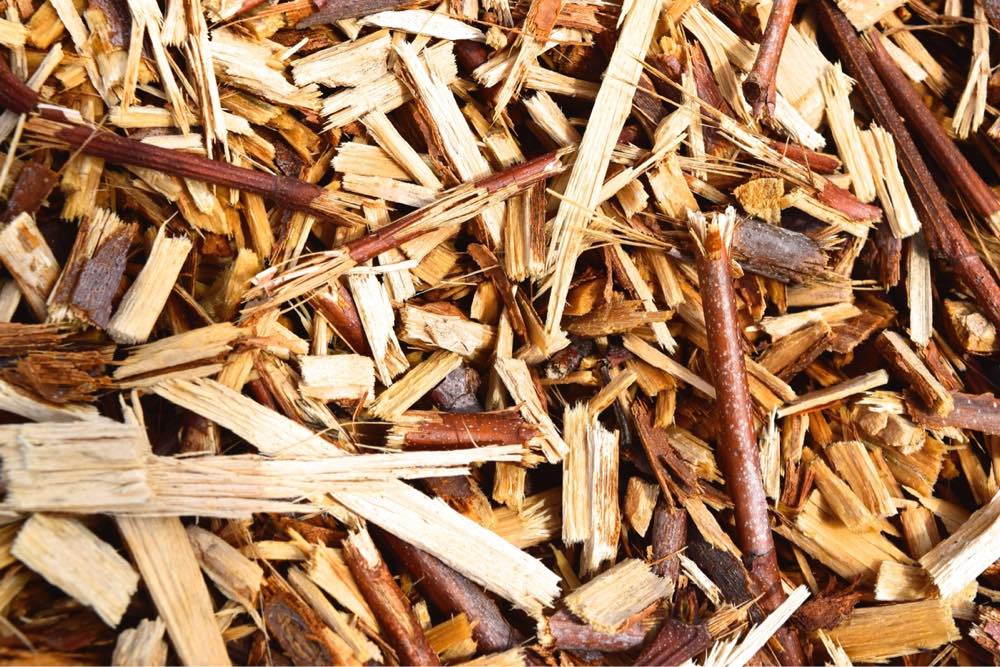Not nearly outdated: Use of Waste Wood in a Biomass Cogeneration Plant
Waste wood is one of the most important building blocks of the energy transition. It makes an enormous contribution on the way to climate-friendly and affordable energy generation and thus to the energy and heat turnaround. But what is waste wood actually and which types are suitable for use in a biomass cogeneration plant? Here you can find out the most important facts.
Waste wood - what is it?
Around eight million tons of waste wood are generated in Germany every year. This includes wood waste from the packaging industry, construction and demolition. Wood from so-called municipal waste – i.e. waste from households, public institutions and companies – is also included.
So at first glance, waste wood is really just waste – or a byproduct of other manufacturing processes. At second glance, however, there is a lot of potential in it. That’s why scrap wood doesn’t just end up in a landfill site and rot away – on the contrary, it’s put to good use. Thanks to special sorting and processing methods, a valuable and climate-friendly secondary raw material is created for energy generation; for example, in the form of wood chips or wood pellets.

Waste wood: The recycling miracle
In Germany, around 80 percent of waste wood is used in central waste wood power plants, mainly to generate electricity but also heat. The remaining 20 percent is recycled – mainly into particleboard.
Waste wood is thus a showcase example of maximum recycling and makes an enormous contribution to climate protection. After all, this type of sustainable raw material utilization saves around 66 million tons of CO2 in Germany (source: Altholzverband).
Another advantage: waste wood does not cost much. Its use as fuel in biomass cogeneration plants is therefore not only ecologically exemplary, but also economical.
What is behind the term waste wood? A definition
Industrial waste wood and used wood are summarized under the collective term waste wood.
Industrial waste wood is wood residue that is produced during wood processing – for example, sawdust in a sawmill.
Used wood refers to used products made of solid wood, wood-based materials or composite materials with a predominant wood content – for example, used beams, floorboards or old fences.
What types of waste wood are there?
Not all wood is the same. Which species count as waste wood is specified in § 2 No. 4 of the German Waste Wood Ordinance.
Important to know: Not all types of waste wood are suitable for wood gasification. Pre-contaminated wood that has already been treated with varnish or similar coatings, for example, is excluded.
These uncontaminated types of waste wood are suitable for wood gasification in the biomass CHP unit:
- Construction and demolition wood (e.g. solid wood, chipboard, scaffolding)
- Waste from the wood processing industry (e.g. furniture manufacturers)
- Uncontaminated industrial waste wood, which is a by-product and not waste (e.g. chips from sawmills)
- Construction wood
- Wood packaging material (e.g. boxes and pallets)
- Old, untreated furniture such as cabinets and tables
- Bulky waste wood
- Wood scraps from house construction (e.g. roof trusses)
These types of waste wood are usually not eligible for wood gasification:
- Wooden items that are bonded to other materials (e.g., wooden windows with glass residue)
- Furniture with varnish or plastic coatings (e.g. kitchen cabinets)
- Roadside woods; for example, trees and shrubs along the roadway
- Forest residual woods (weak woods such as strong branches of a deciduous tree or top pieces of conifers – i.e. logs of small diameter that cannot be utilized in the sawmill industry)
Who can use waste wood?
Waste wood can be used to generate electricity and heat in a biomass cogeneration plant in a cost-effective and climate-friendly way. In contrast to use in centralized large-scale plants, these CHP units support the path of the energy transition toward decentralized generation of energy where it is used. This makes particular sense for companies or facilities that have a constant year-round demand.
The use of waste wood in a biomass cogeneration plant is particularly interesting for wood-processing companies such as sawmills or furniture manufacturers. This is because they produce their own fuel virtually on the side: the waste wood is a by-product of ongoing production. Instead of exporting it at great expense or disposing of it, a biomass cogeneration plant can convert it into heat and electricity to supply the company itself.
It could hardly be more efficient, sustainable and climate-friendly.
But buying in waste wood is also highly attractive for companies. Compared to other raw materials, wood chips based on waste wood are not only more climate-friendly, but also cheaper. Energy generation with waste wood makes particular sense for companies that are located near sawmills or other wood-processing companies. Here, the supplier is located in the neighborhood – expensive transport costs are thus eliminated.
Waste wood as a regular fuel: The advantages
The use of waste wood for a biomass cogeneration plant has numerous advantages. The two biggest pluses are environmental friendliness combined with cost-effectiveness.
Here are the details at a glance:
The German Waste Wood Ordinance: Which waste wood can be used as fuel?
While many types of waste wood are ideal for energy generation, there are some types that are not suitable for this purpose or need to be appropriately processed in advance. The law also divides waste wood into different categories. They can be found in
§ 2 No. 4 of the Waste Wood Ordinance:

Waste wood category A1 – ideal for wood gasification:
Natural or only mechanically processed waste wood that has not been contaminated more than insignificantly with non-wood substances during its use – for example, lumber and veneer, Euro pallets, untreated beams and boards.
Waste wood category A2:
Glued, painted, coated, varnished or otherwise treated waste wood without halogen organic compounds in the coating or without wood preservatives. This category is also suitable for wood gasification after appropriate treatment.
Waste wood category A3:
Waste wood with halogen organic compounds in the coating without wood preservatives.
Waste wood category A4:
Waste wood treated with wood preservatives (e.g. railroad sleepers, utility poles, vineyard posts) and other waste wood that cannot be assigned to the preceding categories due to its pollutant load.
Energy from waste wood: Which requirements apply?
In Germany, it is clearly regulated which waste wood may be used under which conditions in a biomass cogeneration plant for energy production. We have summarized the most important key data for you:
- Operators of a biomass CHP unit must ensure that only wood that belongs to the approved waste wood categories is used. This is ensured by appropriate preparation, visual inspection and sorting.
- Operators of a biomass CHP plant must keep an operation diary. The prescribed contents of this diary can be found in §12 of the Waste Wood Ordinance.
- If waste wood cannot be clearly assigned to a waste wood category, it must be classified in a higher waste wood category.
- The personnel must be knowledgeable. This means that the employees have received operational training based on a familiarization plan.
- Sorted out waste wood and interfering materials must be disposed of separately without delay.
According to the Waste Wood Ordinance, used waste wood must be free of impurities. Impurities are inorganic and organic non-wood substances such as:
- Soil material
- Stones
- Concrete
- Metal parts
- Paper/cardboard
- Textiles
- Plastics
- Foils